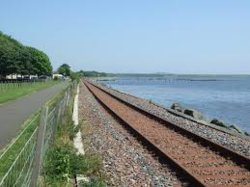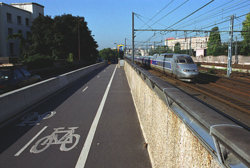tonich
Well-Known Member
As we all know. In the 1960s the Beeching report lead to the closure of about one third of Britain's rail network. As a result there are now hundreds of disused railway lines which now make fabulous, safe walking and cycle routes.
All well and good but we have missed a trick. Rather than the mindset (as great as it is) of making use of old railway lines, why have we never made use of current railway lines?
This would involve having a 'parallel' track, separated by the current fencing but running alongside our railways. This could also be used as a service line.
We would then have an extensive off road cycle network, reasonably flat and linking all major cities as well as many towns and villages.
As I say, we may have missed this opportunity with regards to our current rail network but current legislation which includes cycle lanes for some of our new roads (which can end up poorly connected and just as dangerous) could be created for new railway lines and who's to say, if it is popular then other rail networks may add cycle tracks as budgets become available.
All well and good but we have missed a trick. Rather than the mindset (as great as it is) of making use of old railway lines, why have we never made use of current railway lines?
This would involve having a 'parallel' track, separated by the current fencing but running alongside our railways. This could also be used as a service line.
We would then have an extensive off road cycle network, reasonably flat and linking all major cities as well as many towns and villages.
As I say, we may have missed this opportunity with regards to our current rail network but current legislation which includes cycle lanes for some of our new roads (which can end up poorly connected and just as dangerous) could be created for new railway lines and who's to say, if it is popular then other rail networks may add cycle tracks as budgets become available.


